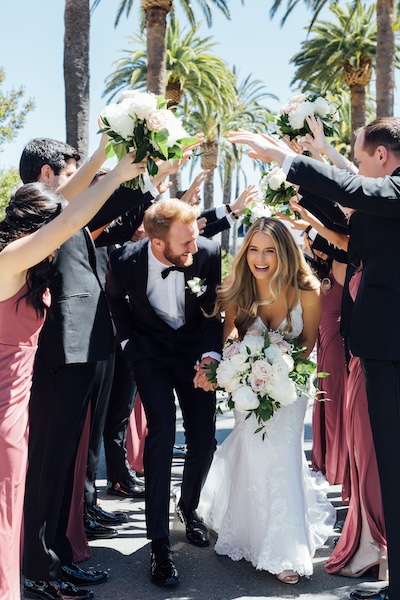Business + Marketing
Does Photographing Street Art Violate the Artist’s Copyright?
March 2, 2017
When it comes to photographing on the street, many wedding photographers and others have sought out “public” art as backdrops. But is photographing street art in this way a violation of the artist’s copyright that is legally actionable against the photographer? Let’s find out.
Is street art copyrightable?
In general, artwork becomes eligible for copyright when it is fixed in a tangible medium (for example, painted on a brick wall), and it must be original to the author (i.e., not a copy of a someone else’s work). The fact that street art is openly displayed in public does not change a street artist’s ability to protect his or her work from copyright infringement.
The Copyright Office has clearly stated that “titles, names, short phrases and slogans; familiar symbols or designs; mere variations of typographic ornamentation, lettering or coloring are not eligible for copyright.” Why? Because such work, no matter the amount of time and effort an artist has invested or how artistically drawn, is not considered “original” to the author.
As a result, some street art of short words and phrases, although artistic, may not qualify for copyright. “Graffiti” is traditionally defined as a drawing or painting on a wall that is placed there without permission (vandalism). While U.S. copyright law does not state whether such art is eligible for copyright, courts generally do not reward criminal action. Moreover, the purpose of copyright law is to “promote the Progress of Science and useful Arts,” as stated in the U.S. Constitution. Some have argued successfully in court that artistic vandalism is not “useful art.” Therefore, while this issue is not clearly defined in U.S. copyright law, it seems that art placed on property without permission is less likely to be as eligible for copyright protection.
Does photographing street art violate the street artist’s copyright?
Under U.S. copyright law, the violation of a copyright owner’s exclusive rights occurs when an infringer copies and/or creates a “derivative work” that is a copy or “substantially similar” to the copyright owner’s work. Thus, taking the photograph of a colorful mural alone, for the specific purpose of making a copy of the mural itself, may violate the mural artist’s copyright, especially if the image is then sold by the photographer for a commercial purpose (such as an advertisement). However, professional photographers often use street art as a backdrop to their projects or photograph the mural together with other elements, and creatively use lighting and composition to create something that is more unique and thus “original” to the photographer. In such cases, a defense known as “fair use” may apply. Unfortunately, though, there is currently no way to definitively measure when infringement ends and a new work begins.
To avoid a copyright infringement action, photographers must be mindful of a few general benchmarks when photographing street art: (1) whether the street art is copyrighted or copyrightable (perhaps try to find out whether the mural was painted with permission or qualifies as vandalism); (2) if the image uses the street art in a “transformative” or minimal way (the more creative the image is, the more elements embedded in it, the better); and (3) how the photograph will ultimately be used or sold. Photographing street art for commercial purposes necessarily carries its risks, but these guidelines may help you avoid or defend a possible legal action resulting from shooting street art within your own images.
Aaron M. Arce Stark is a lawyer for artists and entrepreneurs. Learn more about his law firm at stark.law. He is sharing his legal knowledge to Rangefinder monthly—let us know what issues or topics you want covered by sending your questions on photo- and law-related topics that you want Aaron to answer to rangefinder@emeraldexpo.com.




